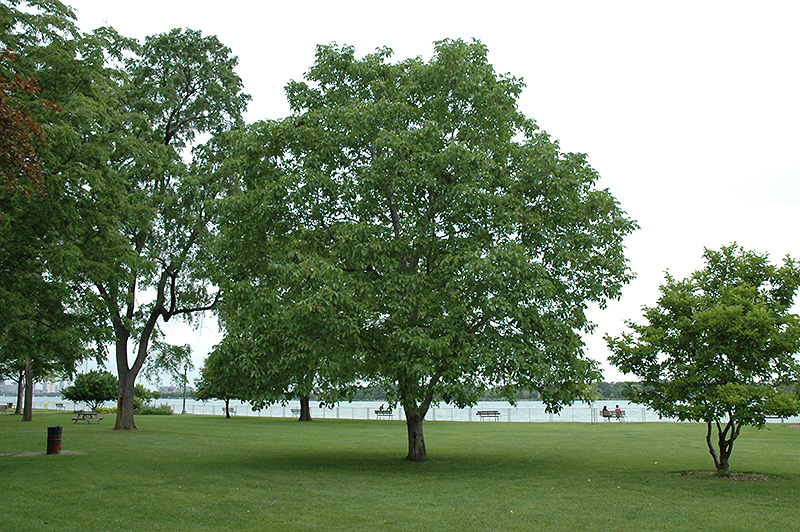Walnut, English Carpathian Juglans regia 'Carpathian' Height: 50 feet Spread: 50 feet
Sunlight:
Hardiness Zone: 5a Other Names: Common Walnut, Persian Walnut Description: A large shade tree selected for its commercial-grade fruit; compound leaves provide an interesting texture, best for larger landscapes and nut orchards, attracts squirrels, can be somewhat messy Edible Qualities Walnut, English Carpathian is a large tree that is typically grown for its edible qualities. It produces large brown oval nuts in hard shells which are usually ready for picking from early to late fall. The nuts have a sweet taste and an oily texture. The nuts are most often used in the following ways: Features & Attributes Walnut, English Carpathian has dark green deciduous foliage on a tree with a round habit of growth. The large pinnately compound leaves turn yellow in fall. It produces brown nuts in late fall. The fruit can be messy if allowed to drop on the lawn or walkways, and may require occasional clean-up. This is a deciduous tree with a more or less rounded form. Its average texture blends into the landscape, but can be balanced by one or two finer or coarser trees or shrubs for an effective composition. This plant will require occasional maintenance and upkeep, and is best pruned in late winter once the threat of extreme cold has passed. It is a good choice for attracting squirrels to your yard. It has no significant negative characteristics. Aside from its primary use as an edible, Walnut, English Carpathian is sutiable for the following landscape applications; Planting & Growing Walnut, English Carpathian will grow to be about 50 feet tall at maturity, with a spread of 50 feet. It has a high canopy with a typical clearance of 6 feet from the ground, and should not be planted underneath power lines. As it matures, the lower branches of this tree can be strategically removed to create a high enough canopy to support unobstructed human traffic underneath. It grows at a medium rate, and under ideal conditions can be expected to live to a ripe old age of 120 years or more; think of this as a heritage tree for future generations! While it is considered to be somewhat self-pollinating, it tends to set heavier quantities of fruit with a different variety of the same species growing nearby. This tree is typically grown in a designated area of the yard because of its mature size and spread. It should only be grown in full sunlight. It prefers to grow in average to moist conditions, and shouldn't be allowed to dry out. This plant should be periodically fertilized throughout the active growing season with a specially-formulated acidic fertilizer. It is not particular as to soil pH, but grows best in rich soils. It is somewhat tolerant of urban pollution. This is a selected variety of a species not originally from North America. Special Attributes Planting 2 increases production. Growing fruit trees is a very tasty and rewarding food source, it does take time, energy and devotion to maintain so if you are up for the task. Walnut trees are a nut tree that are less maintenance here in the Columbia Basin see our website, go to products then fruit trees click on Walnuts for our care guide![]()
![]()
![]()
![]()
![]()
![]()
![]()
![]()
![]()


